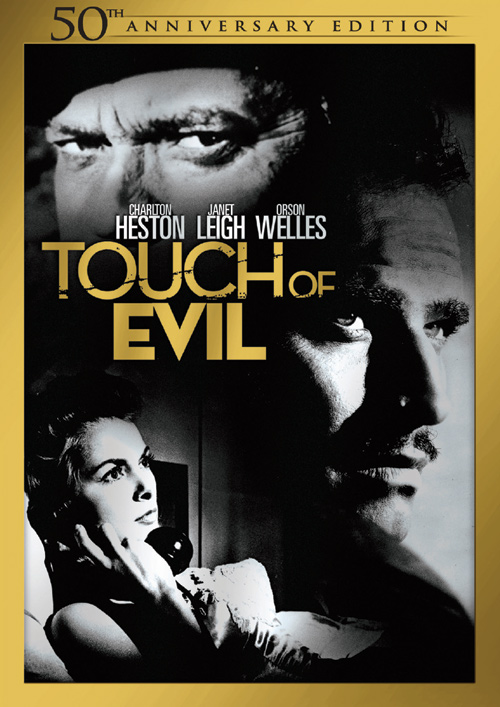Orson Welles became an icon in the film industry with his ingenuity and mastery of cinematography. Beginning with Citizen Kane, Welles shows his cinematic genius. Touch of Evil is no exception. Although never a box office hit, this mystery film quickly sheds its genre with an impressive display of dozens of cinematic techniques. In particular, the use of long shot and camera angle help to illustrate both the explicit plot and the implicit purpose of each character.
Touch of Evil begins with a long shot that continues for three minutes and twenty seconds. The long shot was timed perfectly, and foreshadows the conflicts in the movie. Impressively, this is done almost entirely without the use of dialogue. Beginning with a close angle shot of the bomb, the viewer is shown that this will be the central part of the film. Next, the scene transitions into a crane shot of the bomb being put into the trunk of the car, as well as people walking towards the car. Using a crane shot and a wider angle signifies to the audience that the particular car and people are not as important to the story and film as a whole. Lastly, the audience is able to see a shot of a man and woman walking along the streets. Because of the straight-on angle, we see that these two people will be main characters. The color of their clothing and skin (she’s white and he’s clearly meant to be Hispanic in some kind of “brown face”) also helps to introduce the racial divide that will be a central plot in the film. Finally, we see the border patrol, which shows us that without a doubt the Mexico versus America tension will be present. However, because of how integrated the Mexicans are with the few Americans we’ve seen, the viewer also gets the sense that the distinction between good and evil or the “sides” might be messy. Aside from the numerous camera angles, part of what makes this long shot impressive is the timing. It creates the illusion of a scene change. The many actors had to be perfectly in sync for the scene to run as smoothly as it did. Not only does the opening sequence show aspects of the storyline, it also illustrates Orson Welles’s talent as a director.
Camera angles and lighting also play an important role of introducing the implicit purpose of each character. Characters that are seen as having a “touch of evil” are generally in the shadows more and are shot from Dutch and low angles. This makes them appear bigger than they are, as well as gives them a feeling of being “off.” An example of this would be with the Mexican cartel men or the character “Grande”. In numerous scenes, they would be shot from a low angle to make them appear more menacing. Characters that are seen as trustworthy often are shot from a straight-on angle, and have more close ups of their faces. Janet Leigh’s character Susan, for example, was only shot from these angles. The gypsy, Marcia, is another example. Marcia’s purpose in the film is to provide a sort of wake up call for Hank, Orson Welles’ character. She has a good purpose, and is therefore shot from angles that we see more often in the real world. Close ups on her face also add to the audience’s feeling of trust for her. Orson Welles’ character, Hank, has shots from both angles, showing that he has both good and bad. He strives to administer justice, but also commits many crimes. An example of this is the scene where he meets with Grande in the bar. To start, he is shot from a low angle to show his power, as well as the bit of evil he possesses from agreeing to a meeting with Grande. However, as soon as he drinks alcohol (and ends his lengthy sobriety) he is seen from a straight on angle and an overhead shot. This shows that he has lost his power, and also that his intentions in that scene were not evil. We almost feel pity for him, and the new camera angle adds to that.
“Touch of Evil” contains such intricate and interesting directing that its impact on film history is undeniable. Orson Welles continues his legacy of great cinematography. Through camera angles, lighting, and long shots both the implicit meaning of characters and explicit plot of a mystery.





1 Comment
Add Yours →The Gypsy played by Marlene Dietrich is Tanya, not Marcia as you have in the article. “He was some kind of man… what does it matter what you say about people? … Adios.”